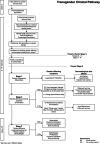Dermatological care of gender-diverse patients in Australia
- PMID: 39115047
- PMCID: PMC11629140
- DOI: 10.1111/ajd.14360
Dermatological care of gender-diverse patients in Australia
Abstract
In recent years, there has been an increasing recognition of the unique healthcare needs of gender-diverse patients in Australia. With the continuous growth of referrals to gender health services, there is an increased demand for specialised dermatological care. There is still a significant knowledge gap and a lack of guidelines specifically tailored to this patient group. In this article, we will provide a brief overview of the journey of Transgender and Gender Diverse (TGD) individuals as they embark on psychological and pharmacologic treatment for gender dysphoria in Australia. We endeavour to contribute to the existing body of knowledge by examining the evidence surrounding the treatment of skin, hair and nail issues for TGD patients. This article will outline how dermatologists can assist in the care of the gender-diverse patient. Although puberty blockade (stage 1 treatments) has minimal dermatological impact, gender-affirming pharmacotherapy (stage 2 treatments) can lead to many dermatological issues including acne, patterned hair loss (PHL) and dermatitis. The dermatologist may also play a role in stage 3 treatments which include surgical or procedural interventions for gender affirmation.
Keywords: Australia; cosmetic techniques; dermatology; sexual and gender minorities; skin diseases.
© 2024 The Author(s). Australasian Journal of Dermatology published by John Wiley & Sons Australia, Ltd on behalf of Australasian College of Dermatologists.
Conflict of interest statement
We have no known conflict of interest to declare.
Figures



References
-
- Telfer MM, Tollit MA, Pace CC, Pang KC. Australian standards of care and treatment guidelines for transgender and gender diverse children and adolescents. Med J Aus. 2018;209(3):132–136. - PubMed
-
- Coleman E. Standards of Care for the Health of transsexual, transgender, and gender‐nonconforming people. Standards of care for the health of transsexual, transgender, and gender‐nonconforming people: an introduction. Principles of gender‐specific medicine: Elsevier; 2017. p. 69–75.
-
- Mahfouda S, Moore JK, Siafarikas A, Zepf FD, Lin A. Puberty suppression in transgender children and adolescents. Lancet Diabetes Endocrino. 2017;5(10):816–826. - PubMed
Publication types
MeSH terms
LinkOut - more resources
Full Text Sources
Miscellaneous

